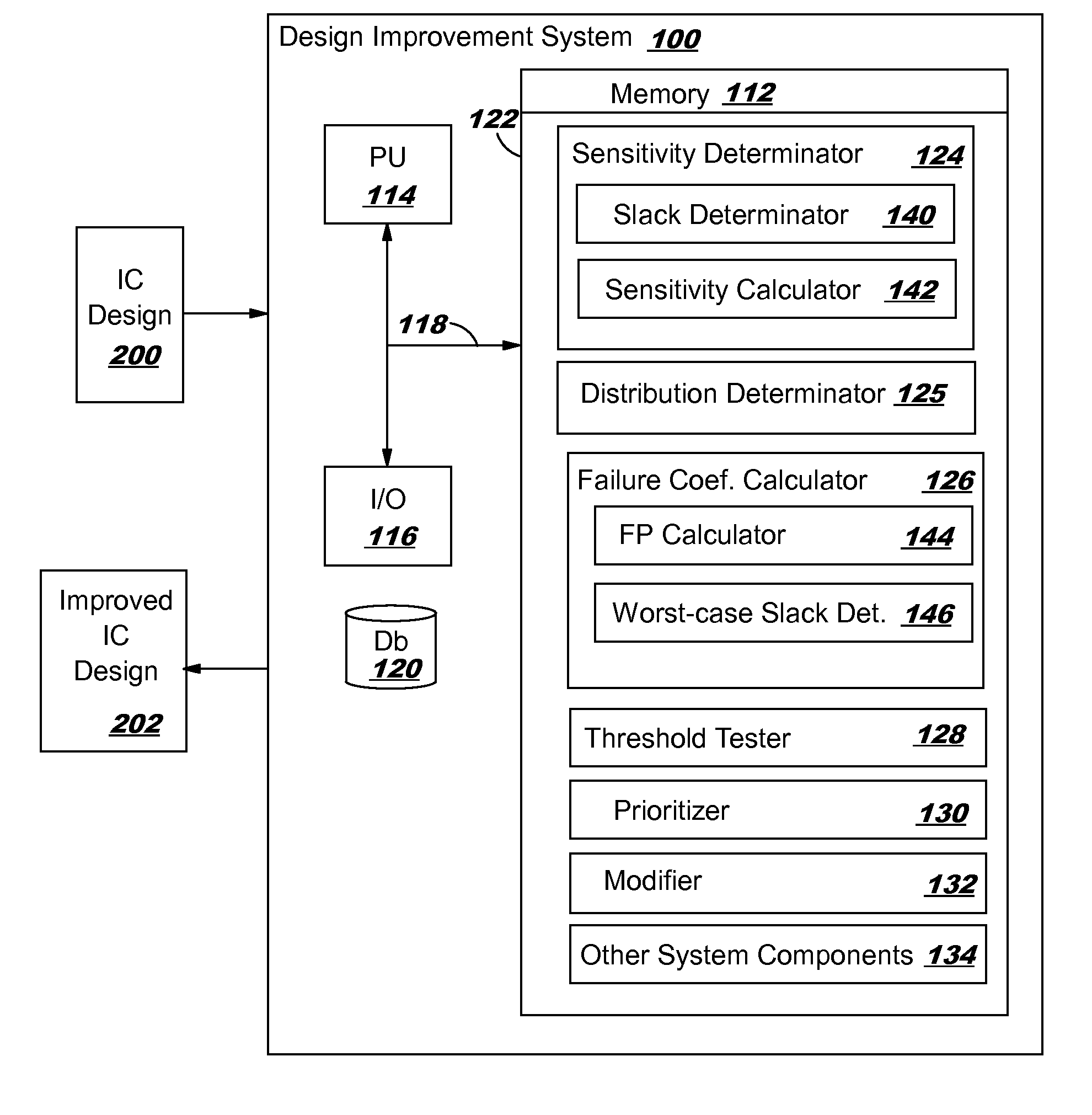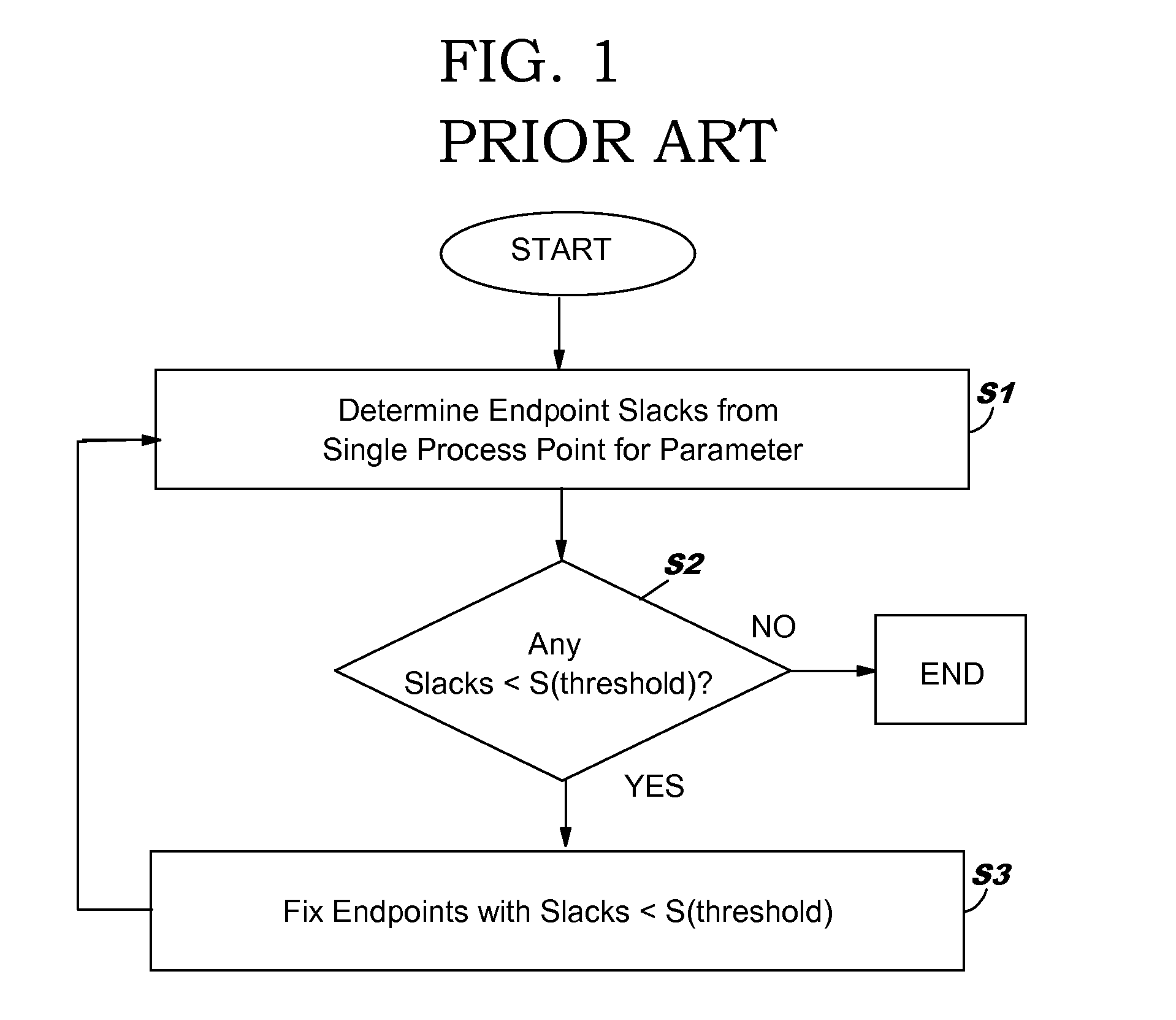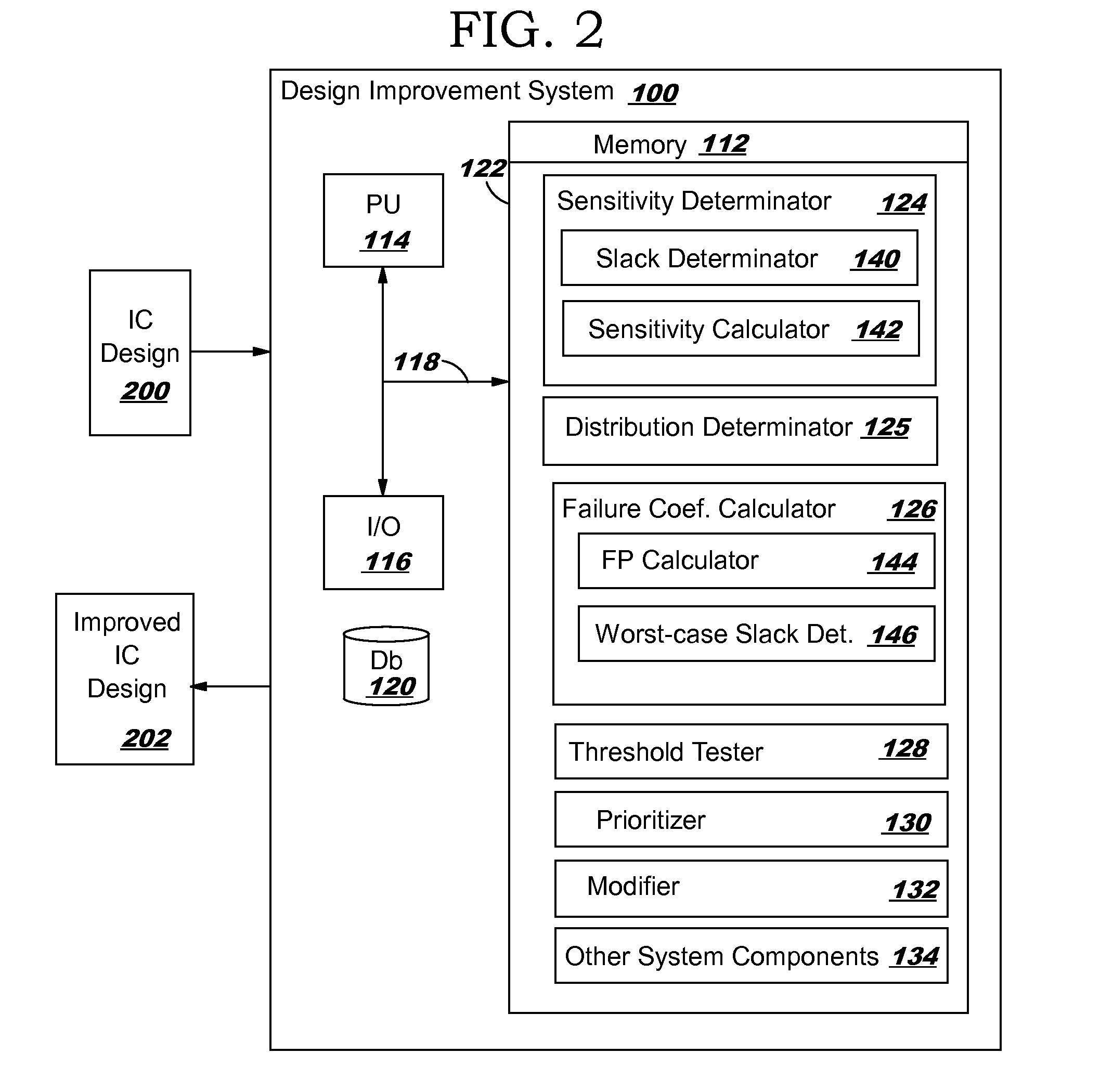Slack sensitivity to parameter variation based timing analysis
a parameter variation and timing analysis technology, applied in the field of integrated circuit design, can solve the problems of non-zero failure probability, extreme time and resource consumption, and conventional timing analysis approaches that also do not satisfactorily address timing errors, so as to improve the probability of an integrated circuit design, improve the slack, and improve the slack
- Summary
- Abstract
- Description
- Claims
- Application Information
AI Technical Summary
Benefits of technology
Problems solved by technology
Method used
Image
Examples
Embodiment Construction
[0021] For purposes of clarity only, the description includes the following sub-titles: I. System Overview, II. Operational Methodology, and III. Conclusion.
I. System Overview
[0022] With reference to the accompanying drawings, FIG. 2 is a block diagram of an integrated circuit (IC) design improvement system 100 according to one embodiment of the invention. System 100 includes a memory 112, a processing unit (PU) 114, input / output devices (I / O) 116 and a bus 118. A database 120 may also be provided for storage of data relative to processing tasks. Memory 112 includes a program product 122 that, when executed by PU 114, comprises various functional capabilities described in further detail below. Memory 112 (and database 120) may comprise any known type of data storage system and / or transmission media, including magnetic media, optical media, random access memory (RAM), read only memory (ROM), a data object, etc. Moreover, memory 112 (and database 120) may reside at a single physical...
PUM
 Login to View More
Login to View More Abstract
Description
Claims
Application Information
 Login to View More
Login to View More - R&D
- Intellectual Property
- Life Sciences
- Materials
- Tech Scout
- Unparalleled Data Quality
- Higher Quality Content
- 60% Fewer Hallucinations
Browse by: Latest US Patents, China's latest patents, Technical Efficacy Thesaurus, Application Domain, Technology Topic, Popular Technical Reports.
© 2025 PatSnap. All rights reserved.Legal|Privacy policy|Modern Slavery Act Transparency Statement|Sitemap|About US| Contact US: help@patsnap.com



